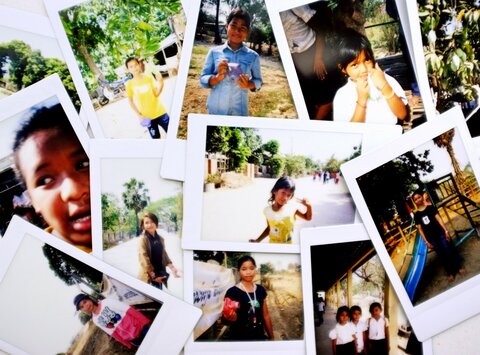Why adolescents can be the new champions of nutrition

We've all been there. You don't feel like a child anymore, but you're not yet an adult. You're torn between the traditions of your family and the desire for something new, at the crossroads between reliance and independence. For many of us, whether we spent our adolescence in cities or on farms, in poverty or wealth, this is nonetheless our collective experience.
In order to reach the youth that we as a development community serve, this experience of being ‘stuck in the middle' — as described by many of the adolescents engaged in this research — can pose an enormous barrier. Such as when girls don't participate in the programmes we design for children because, even if they fall into the age range, as young wives and mothers they don't see themselves as children anymore.
We know, more or less, that we can find children at schools or new mothers at health clinics. But on any given day, adolescents who've left school are scattered across homes, informal workplaces, gardens, farms and so on. Reaching them is another kettle of fish.
But what if the factors that are keeping us from really addressing their needs are the very things that will help us not only improve their nutrition, but delve deep into entire communities?
When we first discussed the idea for this research with Anthrologica and Unilever four years ago, we couldn't have anticipated the range of insights it would give us. While we went in with a focus of how to reach adolescents, we came out with our eyes opened to the unique influence they could have in the household.
Many adolescents play an active role in providing food for the family — cooking, buying and earning money to buy food. They are more tech savvy than their parents (what adolescent isn't?), and they are exposed to different environments outside the household whose stimuli they absorb and bring back home. Children are told what to eat; adolescents are more likely to decide what to eat, based on the world around them. And if they make the right choices, they can influence the entire family.
The World Food Programme has long worked with adolescents — in school meals and with young mothers and mothers-to-be. Beyond these traditional groupings, this research gave us an opportunity to consider them as an entity of their own, discovering their fears, desires, motivations, how they see themselves, what language speaks to them, and how to involve them.
This research project is a result of 18 months of work, getting to know adolescents across diverse contexts in four countries to understand the differences and the common threads that unify all adolescents. It's our hope that the insights will help programmes designed for adolescents not only reach them effectively, but also engage them in a way that resonates and makes lasting and cascading change.
Let's use this precious moment, somewhere between childhood and adulthood, to influence the mindset of not only tomorrow's leaders and decision makers, but of today's families and communities. If we don't do it, someone else will, and that would be our collective failure.
by Lauren Landis and Simone Gie
Bridging the Gap: Engaging Adolescents for Nutrition, Health and Sustainable Development

